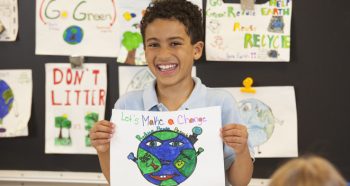“I’m not a very creative person.” It’s easy to say. Unsuccessful teenage drawings, poems and failed music lessons are enough to put most people off the idea of creativity.
Things are changing in the 21st century.
Educational thinkers from Sir Ken Robinson to Yong Zhao lament falling levels of creativity in our schools. This may be caused by the drive to increase academic standards in core curriculum areas such as literacy and maths. 75% of adults surveyed across the world said they felt they were not reaching their creative potential (Adobe, 2012).
So, what is creativity, and why do we need it?
Does it matter that children are becoming less creative, and how could we address the matter if we wanted to?
To many people, “creative” describes a genius such as Michelangelo or Mozart who creates ground-breaking masterpieces, and is considered a leader in their field. This could be described as “big-C” creativity (Kaufman and Beghatto, 2008). However, there is also “little-c” (Craft, 2000) creativity which is a very different thing. Little-c creativity is described by Edward de Bono, as “breaking out of established patterns in order to look at things in a different way”. Instead of focussing on making a masterpiece, little-c creativity is focused on creative thinking skills, and coming up with original ideas to improve anything from a school project to the way a factory works.
As an art teacher I have spent years working with art and design students, and I sometimes pondered the point of it all. We are churning out cohorts of creative people, but what good is it going to do them when they find they can’t get a job as an artist or designer?
Reading Edward de Bono’s research led me to realise that years later, when their student art work has been stored away under the bed, it is the creative thinking skills that my students retain. Given an open-ended assignment, art students are expected to direct their own work and weave their own interests into any theme or idea that they are given.
My students learned how to find things out for themselves, how to think laterally to come up with original ideas, how to make connections between seemingly unrelated subject matter and materials. Very importantly they also learned how to share and act on feedback from their classmates and teachers, and evaluate their own work.
However, creative thinking skills are not the sole preserve of art departments. Educationalists such as Edward de Bono and the researchers at Harvard Project Zero have designed excellent resources that can be used in any subject to foster these skills.
“We have entered a new economy” as Yong Zhao says. And this new economy requires creative and innovative entrepreneurs, not the “medium skilled, middle class jobs that were the backbone of the workforce in the past”. (Wohlson, 2012). Unfortunately, our education system is still mainly organised as it was in the 19th century. With an emphasis on memorisation instead of thinking skills, learners might lack the resources to cope when they don’t know the answer.
So where are they now? What happened to my students and my friends after graduating with an art degree?
They applied their creativity to the challenge of earning a living including:
- Teaching yoga
- Being a priest
- Making props for James Bond movies
- Starting a ballet school,
- Being a social media coordinator
Many start their own creative businesses, because getting a job as an artist is nearly impossible. Surely these are the kind of people who are fit for the “new economy”?
I’m not arguing that literacy and maths should be abandoned in favour of art, but that creativity can be built into all subject areas. If this is done well, learners’ motivation increases from the excitement and stimulation of taking part in creative thinking activities.
“Without creativity, we are all less inspired, less inventive, less resourceful, less socially aware, less globally aware, less of a society… and ultimately less human”.
Nigel Carrington, vice-chancellor at the University of the Arts, London





